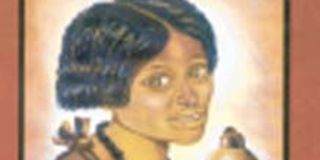One Oromo woman’s story

Title: Hawecha: A Woman for All Time
Author: Rhodia Mann
Publisher: Sasa Sema
Reviewed by JOSEPH NGUNJIRI
Many Kenyans are fairly familiar with the history of Kenya’s peoples, complete with their legends, heroes and heroines.
However, the same cannot be said of the communities living in northern Kenya. Just as they are marginalised in terms of development, not much is known of their history or culture.
That is not to say that the communities up north do not have a history worth being shared with other Kenyans.
When, for example, the Oromo people are mentioned, what immediately comes to mind is the protracted war they have been waging against the Ethiopian Government which, at times, spills over to Kenya with deadly consequences.
Shared phenomenon
What most Kenyans do not know is that the Oromo people occupy the southern part of Ethiopia and part of Kenya’s north. Theirs is a shared phenomenon with other African communities who live on shared borders.
In fact it is not uncommon for members of such communities to have relatives across the border.
The most enduring example of cross-border relations is that of former Kenyan Vice-President Moody Awori, whose brother Aggrey Awori had, at some point, challenged Yoweri Museveni for the Ugandan presidency.
Back to the Oromo. Rhodia Mann, a researcher, interacted with a respected Oromo oral historian and among all the stories she was told, the story of one particular woman stood out.
So fascinating was the story of that woman that she decided it was worth being recorded for posterity.
Hawecha: A Woman for All Time is the enchanting story of a woman who, despite living in a patriarchal society, beat all odds to be a leader of her people and actually be accepted as one.
To date, the Oromo people revere Hawecha as one of the greatest leaders in their community’s history. Not only did she possess healing powers, she also had a prophetic vision, and was able to save her people from a number of natural calamities — from famine to diseases.
One can draw parallels between Hawecha’s story and that of Mekatilili wa Menza, another heroine from the Giriama people of Coast Province. Mekatilili’s leadership abilities became apparent when she organised a popular uprising of her people against the British colonialists.
Prophetic vision
For her troubles, she was exiled to far off western Kenya, but she managed to trace her way back to her people. The Giriama heroine is still feted by her people to date.
Hawecha’s story is somehow different from that of Mekatilili, for she died more than 200 years ago. This fact alone makes Rhodia Mann’s book all the more remarkable.
That the author was able to piece together Hawecha’s story simply by relying on word of mouth told across generations adds to the book’s allure.
Hawecha was brought up by a single mother, as her father had died while she was still a young child. Not long after her mother too died, and the now orphaned Hawecha went to live with her aunt, for she was too young to inherit her mother’s homestead.
Her mother’s possessions were however carefully set aside for they would be given to her once she got a family of her own when she got married.
While still living at her aunt’s place, she surprised many elders when she told of a dream she had that foretold of a terrible famine that would afflict their village. In her vision, she had been instructed to warn her people to move to a far off place to escape the inevitable.
However, being a mere child — a girl for that matter — none of the community elders took her seriously. It is only when the famine came upon them that they realised that Hawecha was not an ordinary child.
Her potential notwithstanding, Hawecha was, however, married off, as per the Oromo customs, to a handsome young man from a well-to-do family.
As fate would have it, Hawecha’s husband turned out to have a roving eye. He was also abusive.
One thing led to another and Hawecha miscarried. The husband was also caught in the tight embrace of another woman.
After lengthy deliberations from respected community elders and priests, it was decided that Hawecha’s marriage be annulled.
Eventful life
She was, however, banned from ever getting married to another man. Thus started Hawecha’s long and eventful life as a respected community elder.
It turned out that she possessed supernatural powers to heal and foresee what the future held for her people. What’s more, she constantly communicated with the community’s gods.
Rhodia Mann’s enchanting writing style breathes life into a centuries old story which she repackages it a fast-paced narrative. Once you begin reading it, it is hard to put down.
Through the book, the reader also gets useful insights into the rich Oromo culture.




